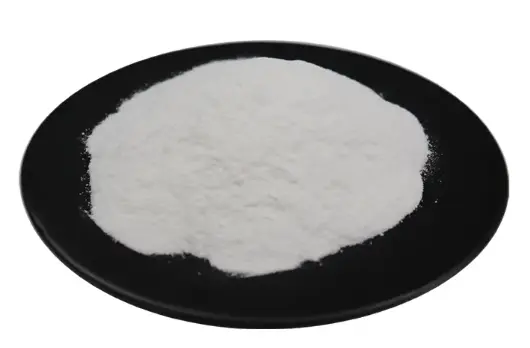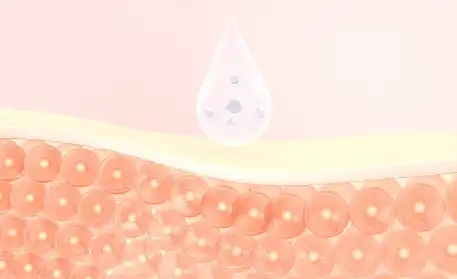How is Sodium Hyaluronate used in cosmetic formulations?
2025-07-30 18:18:53
Sodium Hyaluronate, the salt form of hyaluronic acid, has become a staple ingredient in modern skincare formulations. This powerful humectant is renowned for its ability to hold up to 1000 times its weight in water, making it an excellent hydrator for the skin. But how exactly is Sodium Hyaluronate Powder incorporated into cosmetic products, and what benefits does it offer? Let's dive into the world of this versatile skincare ingredient.

Molecular weight impact on skin penetration
One of the most fascinating aspects of Sodium Hyaluronate is how its molecular weight affects its behavior on the skin. The size of the molecules determines how deeply they can penetrate the skin's layers, influencing the overall efficacy of the product.
Low molecular weight Sodium Hyaluronate
Low molecular weight Sodium Hyaluronate, typically below 50 kDa, can penetrate deeper into the skin. This allows it to hydrate the lower layers of the epidermis and potentially stimulate the skin's natural hyaluronic acid production. Cosmetic formulators often use this form to target fine lines and improve skin elasticity.
High molecular weight Sodium Hyaluronate
High molecular weight Sodium Hyaluronate, usually above 1000 kDa, forms a protective film on the skin's surface. This film helps to lock in moisture and create an immediate plumping effect. Sodium Hyaluronate Powder, as a product form, is particularly useful in formulations designed to provide instant hydration and improve the appearance of dry or dehydrated skin.
Multi-weight formulations
Many advanced skincare products combine different molecular weights of Sodium Hyaluronate to provide both immediate and long-term benefits. This approach allows for surface hydration as well as deeper moisturization, offering a comprehensive solution to various skin concerns.
Synergistic effects with other skincare ingredients
Sodium Hyaluronate's effectiveness can be enhanced when combined with other active ingredients. Its ability to increase skin hydration often amplifies the benefits of other skincare components.
Pairing with Vitamins
When used alongside vitamins like C and E, Sodium Hyaluronate can boost their antioxidant properties. The increased hydration allows for better absorption of these vitamins, potentially leading to improved skin tone and texture.
Combination with Peptides
Peptides, known for their skin-firming properties, work well with Sodium Hyaluronate. The hydrating effect of Sodium Hyaluronate Powder creates an optimal environment for peptides to function, potentially enhancing their ability to support collagen production.
Integration with Ceramides
Ceramides, essential for maintaining the skin barrier, pair excellently with Sodium Hyaluronate. While Sodium Hyaluronate provides hydration, ceramides help to lock in that moisture, creating a more resilient and healthier skin barrier.
Optimal concentration for different skin types
The concentration of Sodium Hyaluronate in cosmetic formulations can vary depending on the product type and target skin concerns. Finding the right balance is crucial for maximizing benefits without causing irritation.

Concentration for Oily Skin
For oily skin types, lower concentrations of Sodium Hyaluronate (around 0.1-0.5%) are often sufficient. These provide adequate hydration without overwhelming the skin or exacerbating oiliness. Lightweight formulations, such as serums or gels, are typically preferred.
Concentration for Dry Skin
Dry skin types may benefit from higher concentrations of Sodium Hyaluronate, typically ranging from 1-2%. These higher concentrations can provide intense hydration and help to alleviate dryness and flakiness. Creams or rich serums are often the vehicles of choice for these formulations.
Concentration for Sensitive Skin
For sensitive skin, it's crucial to start with lower concentrations (0.1-0.5%) and gradually increase as tolerated. Gentle formulations that combine Sodium Hyaluronate with soothing ingredients like aloe vera or chamomile can be particularly beneficial.
Sodium Hyaluronate's versatility in cosmetic formulations is truly remarkable. Its ability to hydrate, plump, and improve overall skin health makes it a valuable ingredient across a wide range of skincare products. From lightweight serums to rich creams, Sodium Hyaluronate Powder can be incorporated to address various skin concerns and complement other active ingredients.
As we continue to uncover the potential of this ingredient, it's clear that Sodium Hyaluronate will remain a key player in the world of skincare. Its ability to adapt to different formulations and skin types ensures its place as a go-to ingredient for cosmetic chemists and skincare enthusiasts alike.
Whether you're looking to boost hydration, improve skin texture, or enhance the efficacy of other skincare ingredients, Sodium Hyaluronate offers a versatile solution. As with any skincare ingredient, it's important to consider individual skin needs and consult with a dermatologist or skincare professional to determine the most suitable products and concentrations for your specific skin type and concerns.
The world of cosmetic formulations is ever-evolving, and Sodium Hyaluronate continues to prove its worth as a cornerstone ingredient in the quest for healthy, radiant skin. As research progresses, we can expect to see even more innovative uses for this remarkable compound in the future of skincare.
Are you a cosmetic or skincare brand looking to elevate your formulations with high-quality, plant-based ingredients? YTBIO offers premium Sodium Hyaluronate Powder and a wide range of organic herbal extracts perfect for your innovative skincare products. Our ingredients are certified organic, sustainably sourced, and backed by rigorous quality control standards including ISO9001, USDA NOP, and EU EC certifications. Whether you're creating luxurious moisturizers, potent serums, or cutting-edge anti-aging products, our Sodium Hyaluronate and other botanical ingredients can help you achieve superior results. Contact us today at sales@sxytorganic.com to learn more about how YTBIO can support your skincare formulation needs and help you create products that truly stand out in the market.
References
1. Papakonstantinou, E., Roth, M., & Karakiulakis, G. (2012). Hyaluronic acid: A key molecule in skin aging. Dermatoendocrinology, 4(3), 253-258.
2. Jegasothy, S. M., Zabolotniaia, V., & Bielfeldt, S. (2014). Efficacy of a New Topical Nano-hyaluronic Acid in Humans. The Journal of Clinical and Aesthetic Dermatology, 7(3), 27-29.
3. Bukhari, S. N. A., Roswandi, N. L., Waqas, M., Habib, H., Hussain, F., Khan, S., Sohail, M., Ramli, N. A., Thu, H. E., & Hussain, Z. (2018). Hyaluronic acid, a promising skin rejuvenating biomedicine: A review of recent updates and pre-clinical and clinical investigations on cosmetic and nutricosmetic effects. International Journal of Biological Macromolecules, 120, 1682-1695.
4. Arezki, N. R., Williams, A. C., Cobb, A. J., & Brown, M. B. (2017). Design, synthesis and characterization of linear and star-shaped polyoxazoline based mucoadhesive polymers for application in drug delivery. International Journal of Pharmaceutics, 532(1), 118-127.
5. Oe, M., Sakai, S., Yoshida, H., Okado, N., Kaneda, H., Masuda, Y., & Urushibata, O. (2017). Oral hyaluronan relieves wrinkles: a double-blinded, placebo-controlled study over a 12-week period. Clinical, Cosmetic and Investigational Dermatology, 10, 267-273.
6. Bowman, S., Awad, M. E., Hamrick, M. W., Hunter, M., & Fulzele, S. (2018). Recent advances in hyaluronic acid based therapy for osteoarthritis. Clinical and Translational Medicine, 7(1), 6.
_1737093401309.png)
